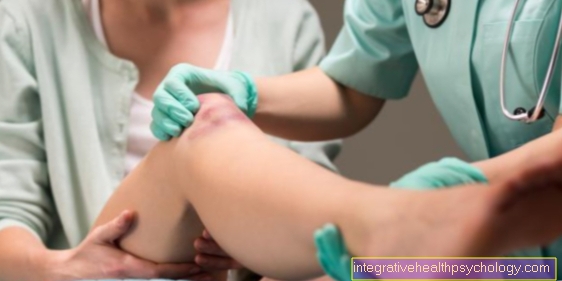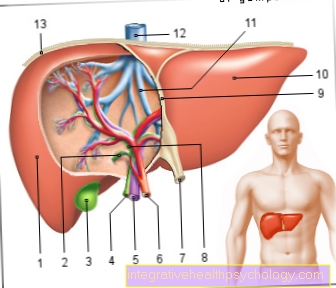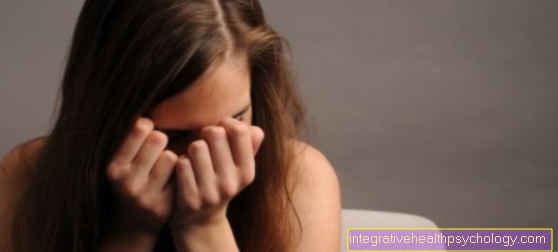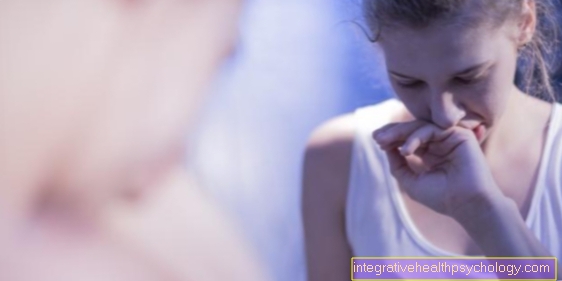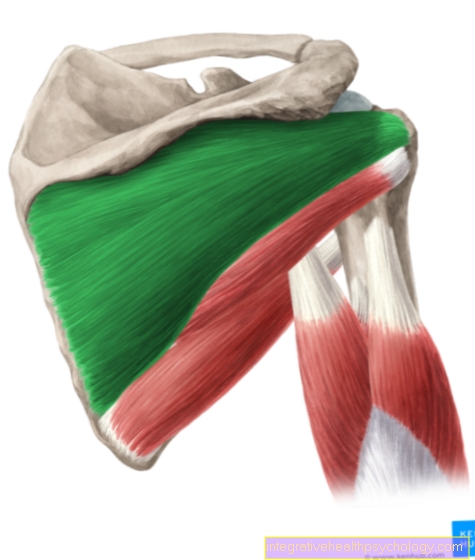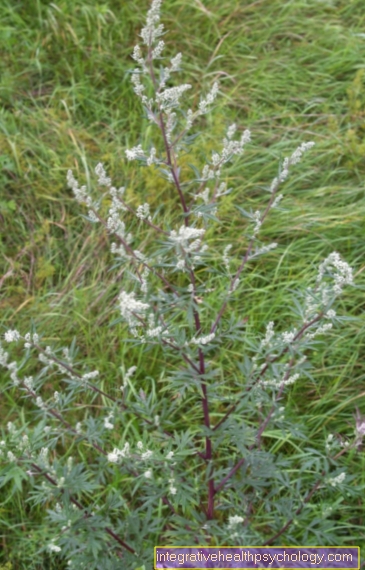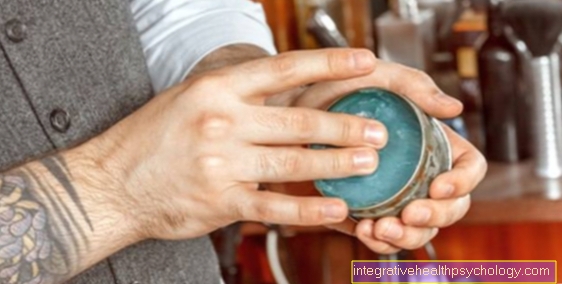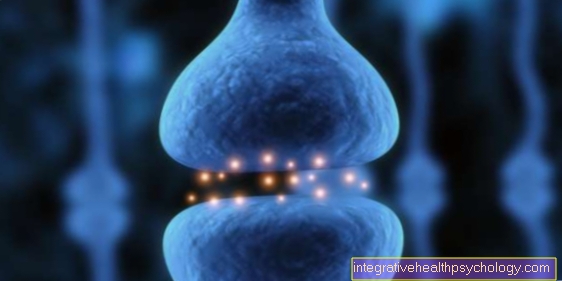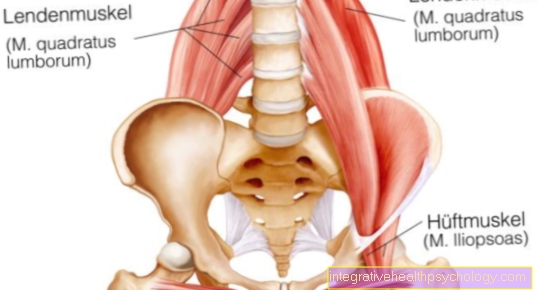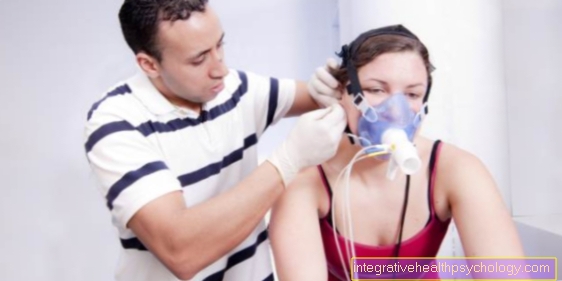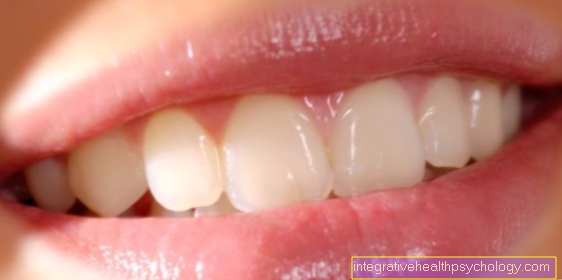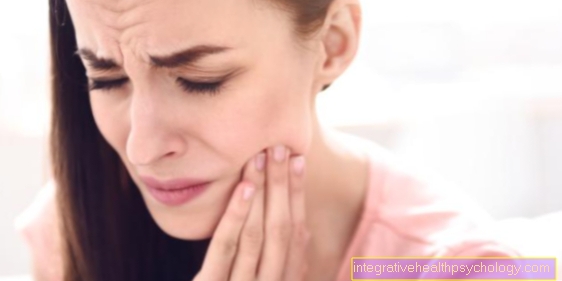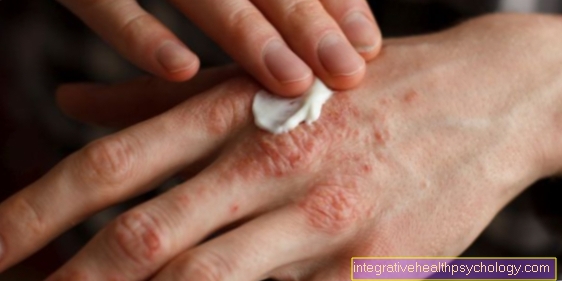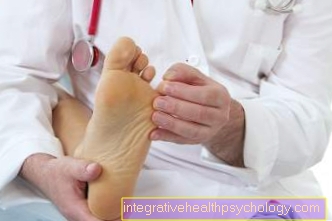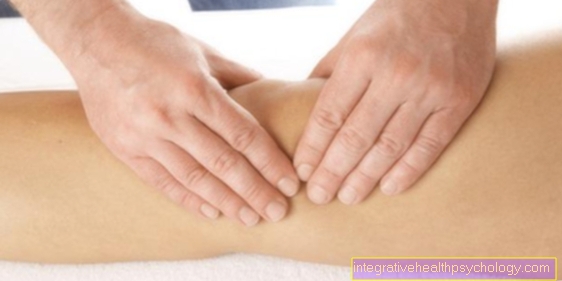Shingles on the head
definition
The causative agent of shingles is the varicella zoster virus (VZV), which belongs to the herpes virus family. It is transmitted through the air and inhaled (droplet infection), but can also spread through contact with virus-containing vesicle contents or crusts (smear infection). When infected for the first time, the disease often manifests as chickenpox in childhood. This results in small, mostly raised, round-oval, red spots and blisters in the area of the trunk, face, arms and legs and accompanying headache and body aches and fever. After healing, the virus can reactivate and develop shingles many years later. The viruses spread along the nerve fibers. Often the head is also affected, resulting in specific symptoms with sometimes serious complications.

Causes of shingles on the head
After chickenpox has healed, the varicella zoster virus (VZV) remains in the body and primarily settles in the area of nerve fibers. Both the nerves in the spinal column and the cranial nerves can be affected. The infection runs symptom-free for a long time. With a weakened immune system (e.g. in old age), with stress, with trauma or with numerous other causes, the viruses can reactivate. In the head area, these migrate along the nerve fibers (cranial nerves) in the direction of the (sensory) organs and the skin. At the same time, the nerve cells are damaged. Frequently affected cranial nerves are the Trigeminal nerve (sensitive care of the face), the Facial nerve (Supply of the facial muscles) as well as the Vestibulocochlear nerve (Auditory and equilibrium nerves). If it spreads to the affected sensory organs, complications such as visual, hearing and balance disorders as well as severe pain in the skin area can occur.
Diagnosis of shingles on the head
The diagnosis is based on the typical symptoms of a VZV disease. So-called herpes zoster vesicles develop in the area of the skin supplied by the respective nerves. At the same time, severe nerve pain often occurs in the area of the affected skin. Paresthesia is also possible. In individual cases, further diagnostics may be necessary (e.g. CSF or blood test). An already healed chickenpox disease can confirm the diagnosis of shingles. However, one should take into account that chickenpox can develop in childhood without any symptoms.
Accompanying symptoms of shingles on the head
The typical infection of the skin serves as the main symptom of a VZV disease. This leads to the formation of so-called herpes zoster blisters (see also: Herpes zoster). These impress as small, water-clear vesicles on a reddened background. Often these are arranged in groups. At the same time, severe itching often occurs in the area of the reddened skin. Scratching the vesicles creates crusts that heal with scarring. In addition, pain typically occurs in the area of the skin that is supplied by the affected nerves.
Before the specific symptoms mentioned above develop, the patient often becomes exhausted with headache and body aches. A slight increase in temperature is also possible. If the virus spreads into the cerebrospinal fluid (liquor), neck stiffness can also occur.
Shingles pain on the head
The infestation and damage to nerve cells by the virus often leads to the development of very severe pain without a recognizable lesion. Mainly due to the infestation of the Trigeminal nerve, who is responsible for the sensitive care of the skin on the face, pain can occur all over the face. If the scalp is affected, this pain can also manifest itself as a severe headache. The pain caused by shingles is usually only slightly or not treatable with the usual painkillers.
Itching of the head with shingles
In addition to the herpes zoster blisters, severe itching often occurs. This can occur before the vesicles appear in the affected area of skin. Sometimes patients also report a kind of pulling instead of an itch. As a result, the vesicles are often scratched and healed with scarring. At the same time, the viruses within the secretion of the vesicles can be transmitted through direct contact with other people (smear infection).
Course of the disease shingles on the head
Before the onset of characteristic symptoms, patients often report fatigue, headache and body aches, a slight fever and abnormal sensations in the skin area. As a result, the herpes zoster blisters and pain develop within a few days. If not treated, the viruses can spread further along the cranial nerves and damage the nerves. This can lead to serious complications in the further course. Paralysis, visual and hearing disorders, severe nerve pain and severe infections are possible.
Therapy for shingles on the head
The treatment of shingles depends on the clinical picture, the age and the health status of the patient. If the head is affected, drug, antiviral therapy is usually required to avoid possible complications. Commonly used antivirals are Acyclovir, Famciclovir, Valaciclovir and Brivudine. These are usually taken in the form of tablets. If the disease is particularly severe, it can also be administered via the vein. Antivirals inhibit the replication of the viruses and thus lead to faster healing of the skin lesions and a reduction in the pain symptoms. If antiviral therapy is started early, the course of the disease can be significantly shortened.
Painkillers are often prescribed to accompany antiviral therapy. The common painkillers show (Ibuprofen, Diclofenac, ASS) partially only a limited effectiveness. For this reason, light opioids and antidepressants (Amitriptyline) and anti-epileptic drugs (Pregabalin, Gabapentin, Carbamazepine) administered.
Antiseptic, drying and crust-dissolving ointments are used to treat the herpes zoster blisters. In the face in particular, these serve to prevent healing and scarring. At the same time, bacterial infection of the vesicles can be prevented.
Also read our article: Zostex and alcohol -Is it compatible?
What do I have to consider when washing my hair?
Shingles on the head often affects the scalp around the hairline. The formation of blisters and crusts leads to the hair sticking together and severe itching. When washing your hair, however, you should ensure that a mild (soap-free) shampoo is used ('baby shampoo'). In addition, regular application of an ointment can be indicated for better wound healing. The use of scented soap shampoos or shower gels can cause severe irritation of the skin with pain and itching.
How long does shingles last on the head?
Shingles on the head usually heals within around two weeks. Typically, within the first few days, general symptoms such as headache and body aches, possibly a slight fever and itching in the area of the affected skin areas appear. The characteristic herpes zoster vesicles with severe pain appear within two to three days. These typically burst within a few days and dry out over time (duration: approx. 10 days). Antiviral treatment that is started at an early stage leads to the disease being healed. After three to four weeks at the latest, all symptoms should have subsided.
How dangerous can shingles on the head be?
If there is no antiviral treatment for shingles on the head, the viruses spread in the area of the nerve fibers and damage them. Depending on which nerves are affected, this can result in some serious side effects.
In the event of infestation and damage to the N. trigmeniuswhich is responsible for the sensitivity in the face, chronic pain can occur (Post-zoster neuralgia). If it spreads over the Ophthalmic nerve (Branch of the trigeminal nerve), the viruses can also spread to the area of the eyes and lead to visual disturbances and even blindness. About a spread over the Vestibulocochlear nerve balance and hearing disorders are possible. Muscle paralysis in the face can also occur. Serious infections can also occur when the virus spreads into the brain or when organs are infected.
How contagious is shingles on the head?
A transmission of the varicella-zoster virus (VZV) with shingles on the head is possible. The herpes zoster vesicles contain the virus particles. The virus can therefore be transmitted through contact with the secretion of the burst vesicles. This affects patients who are not known to have chickenpox. In this case, however, chickenpox also occurs first and shingles only afterwards when the virus reactivates.
Thorough hand washing is recommended after contact with the herpes zoster sores.
Special form of shingles on the head
Shingles of the eye
The viruses often spread over a branch of the Trigeminal nerve (sensitive care of the face) in the eyes. One speaks of a "Zoster ophthalmicus ". As the virus spreads to the various tissues of the eyes, numerous infections are possible. Often there is superficial conjunctivitis (Conjunctivitis) or an infection of the cornea (Keratitis). In rare cases, however, an infection of the dermis or retina and an increase in intraocular pressure (secondary glaucoma) are possible. Because the retina is affected, there is a risk of permanent blindness as the infection progresses.
In addition to the eye-specific symptoms, patients often report severe pain in the forehead, bridge of the nose and tip of the nose. Often, at the beginning of the disease, a reddened, blister-like skin lesion appears around the tip of the nose (Hutchinson sign), which can be an early indication of the spread to the eyes.


